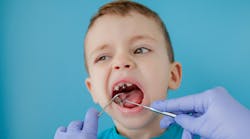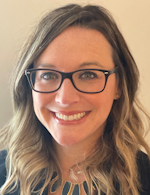Editor’s note: This is part one of a six-part series. Future articles about public health and advocacy for the RDH will be published in the coming months in RDH magazine.
As a dental professional, have you ever felt like you’re working in a silo when it comes to your patients’ overall health? Many of us feel this way. How often have you had a patient in your chair with medical conditions that call for you to speak to that patient’s medical provider? In these cases, many of us either spend half of the appointment trying to get someone on the phone, or we must reschedule the patient’s care.
What about children you see for their first dental visits at age three or four, and because their parents waited so long for the appointment, the children have bombed-out mouths? How does this happen? As dental professionals, we know that there can be many reasons why these scenarios occur. According to the American Academy of Pediatric Dentistry, children who have their first preventive dental visit by age one are more likely to have subsequent preventive visits but not more likely to have subsequent restorative or emergency visits.1
We know the importance of a dental exam by a child’s first birthday, but we need help from our medical partners to reach children early in life. What if we could find a way to work with medical providers more closely to provide better care and communication for our patients? We’d be much happier as clinicians and our patients would have the potential to be healthier.
Taking action
I had the unique opportunity to work on a project in Virginia that addressed the need for medical and dental integration in the pediatric setting. I was working for the Virginia Department of Health as a public health hygienist at the time. My roles varied, but one of my responsibilities was to provide medical professionals with training on fluoride varnish application.
In Virginia, Medicaid will reimburse doctors, registered nurses, nurse practitioners, and certified nursing assistants to apply fluoride varnish on children up to their third birthday.2 This is such an underused service by pediatricians.
Tarin Schmidt-Dalton, MD, family medicine provider and faculty member at Virginia Tech Carilion School of Medicine and an oral health champion, recognized the underutilization of this service. According to the Bright Futures program with the American Academy of Pediatrics, most children have seen a medical provider an average of 10 times by the age of three.3 However, 66.9% of children have their initial dental visit after age three.4 After receiving funding from Delta Dental of Virginia to increase the number of medical providers who apply fluoride varnish, a team was assembled, myself included, and our work began.
As a public health dental hygienist, I worked alongside a small group of people focused on increasing the awareness of the important role pediatricians and medical staff can play in early intervention of dental caries, which is the most common chronic childhood disease. Over a span of four months, my colleagues and I trained more than 200 medical providers and medical students on the application of fluoride varnish. We spent countless hours with them sharing information about prevention and describing the devastation that early childhood caries has on so many children.
Most of the medical providers were shocked that dental professionals treat children with such advanced decay. Some of these children live fewer than five miles from the medical offices where we were training. When our team showed slides of early childhood caries—children I had provided care to in my school-based program—there was silence and disbelief. But with that disbelief came a desire to do more. The medical providers asked questions, and then practiced applying varnish on one another. This motivated them to include oral health exams as part of well-child visits.
This was an amazing project with tangible outcomes. One barrier we recognized in this training was that medical assistants were not on the approved list of medical providers to apply fluoride varnish. The nurses and doctors told us this would be a major barrier as they are already very limited on patient time. We took this to a group that tackles issues like these, Virginia Health Catalyst, and they advocated and lobbied for this change.
We are happy to announce that the bill passed. Effective July 1, 2020, medical assistants in Virginia are applying fluoride varnish. In addition to all of the great outcomes we have seen from this initiative, we were asked to present at the American Family Medicine Practice Conference in July of this year. This was the first time a dental professional had been invited to speak at this annual conference, and it offered the opportunity to discuss integration efforts and oral health. This was huge!
Although the conference was postponed due to COVID-19, I will be anxiously awaiting the opportunity to represent the dental community in front of medical providers. This pandemic has shed light on the need for medical and dental integration more than ever, and hopefully dental professionals can find out-of-the-box ways to work with medical providers for the benefit of patients.
In conclusion, dental professionals are advocates for improved oral health. When we see opportunities for systemic change, policy change, or law change, we should get involved. We should seek organizations in our states that advocate for these changes and become involved with state and national organizations.
It’s important to read national dental magazines to see what dental professionals in other states are doing and to draw inspiration from their accomplishments. We need to speak up and be ready to act when we see the potential for systemic change that will result in the improvement of oral care and access for patients. You’ll find that you will have fun making a difference while making a few new friends.
References
- Early preventive dental visits. American Academy of Pediatric Dentistry. April 2014. https://www.aapd.org/assets/1/7/Early_Preventive_Dental_Visits_Tech_Brief_2014.pdf
- Fluoride varnish in your pediatric practice: An effective, quick, low-cost intervention. Virginia Health Catalyst. https://vahealthcatalyst.org/wp-content/uploads/2020/06/Fluoride-Varnish-One-Pager.pdf
- Recommendations for preventive pediatric health care. Bright Futures/American Academy of Pediatrics. https://downloads.aap.org/aap/pdf/periodicity_schedule.pdf
- Murshid EZ. Children’s ages and reasons for receiving their first dental visit in a Saudi community. Saudi Dent J. 2016;28(3):142-147. doi: 10.1016/j.sdentj.2015.12.003
BROOKE CROUCH, RDH, is a remote supervision dental hygienist with more than a decade of clinical experience in private practice, a state agency, and a federally qualified health center (FQHC). Crouch is an adjunct instructor and mobile dentistry consultant. She is vice president of the American Mobile & Teledentistry Alliance and she serves on several clinical advisory, oral health action, and community-based boards and committees throughout Virginia. Contact her at [email protected] or on her various social media at brookecrouchrdh.







